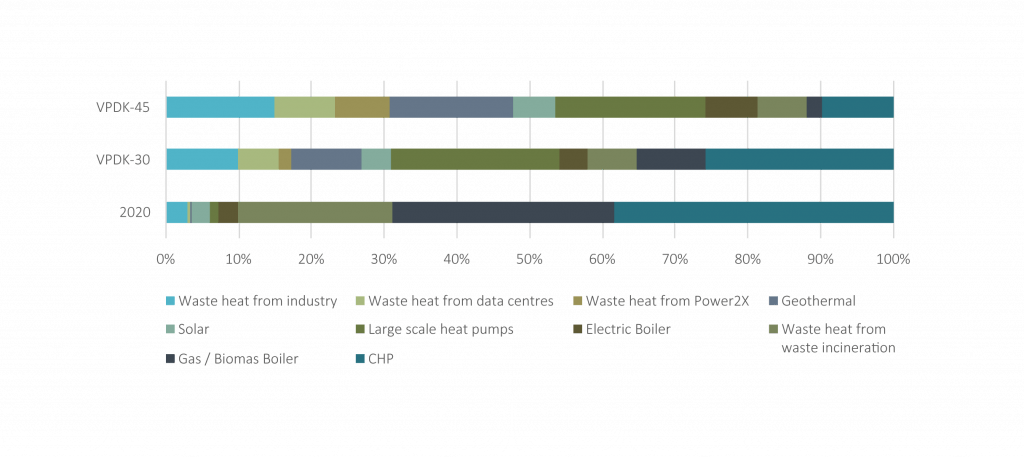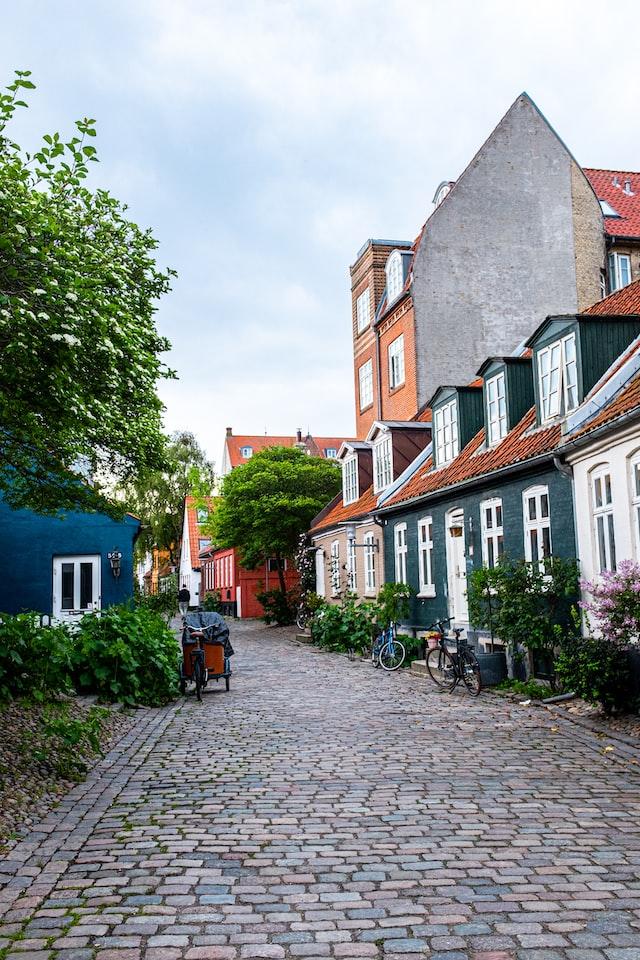Despite gas becoming somewhat of an unwanted child, it will undoubtedly play a crucial role in Denmark’s journey to net zero.
Currently, about 40% of electricity is produced by large scale Combined Heat & Power Stations (CHPs). This generation process will naturally create surplus energy, in the form of heat, which is transferred to the heat network grid and currently accounts for 38% of the total heating demand. By 2045, the year Denmark aims to be net zero, it is expected that half of the heat in Danish heat networks will constitute waste heat, 10% of which will still be provided by CHP – powered by renewable gas (Figure 1).

Indeed, fossil gas is currently being phased out and replaced by renewable gas, consisting of green and synthetic gas. In 2023 green gas will account for 30% of the total gas consumption and according to the Energy Agency’s forecast, by 2030 green gas will cover 72% of the total Danish gas consumption.
Denmark a farming nation, produces two thirds of its green gas from agriculture with half of this from livestock manure. The remaining is largely created from food production and food waste. Green gas typically contains about 60-65% methane, which is fed into the gas grid, and 35-40% percent CO2, which is emitted during upgrading.
CO2 from green gas is among the largest sources of CO2 capture and can provide about 30% of the long-term potential for production of Power-to-X (PtX) fuels such as e-methane. E-methane being the fuel expected to substitute and thus decarbonise heavy transport by road, sea and air. This is a good example of the energy symbiosis made possible through sector coupling; the high-quality waste heat produced as a biproduct from PtX is ideal for heat networks and will certainly ensure ultra-low-cost heat for consumers.
Ultimately, Denmark’s journey towards net zero is guided by two principles; what is the most cost-effective route as well as the most socio-economic route.
Hence, phasing out fossil gas network zones feeding individual gas-fired boilers that: have a poor efficiency, are cost-sensitive to a single fuel source and have a high carbon footprint, for instead, heat networks that offer reliable low-cost heat, flexibility of energy source and a lower carbon footprint, is a key constituent of the Heat Plan for Denmark.
According to a new report called “Accelerating a green Denmark”[1], the combination of large increases in electricity consumption and the transition to electricity generation based mainly on wind and solar power, is expected to pose major challenges for security of supply in the future. Hence, if Denmark is to continue to have a high security of supply the report concludes:
- Regulation must provide incentives for us to continue to have power generation at CHP plants. Developments in recent years have eroded the share of CHP revenues coming from the electricity side (the power plant part). Heat network companies are therefore no longer investing in CHP plants, but only in heat production technologies. If we want to maintain a high level of security of electricity supply, we need to reverse this trend by introducing regulation that provides incentives for electricity production in CHP plants.
- We should prioritise renewable gas for flexible CHP plants. Renewable gas, when used strategically for a CHP, will continue to ensure a secure supply of electricity in times of peak or exigent demand when Denmark achieves net zero in 2045.
[1] Accelerating a green Denmark, Danish District Heating Climate and Supply Proposal, April 2022
